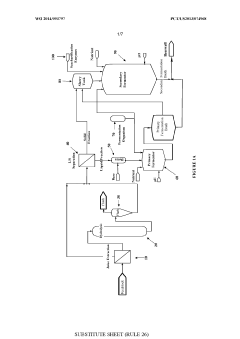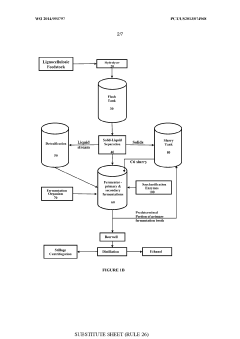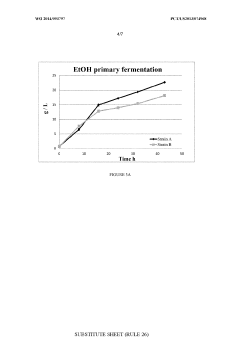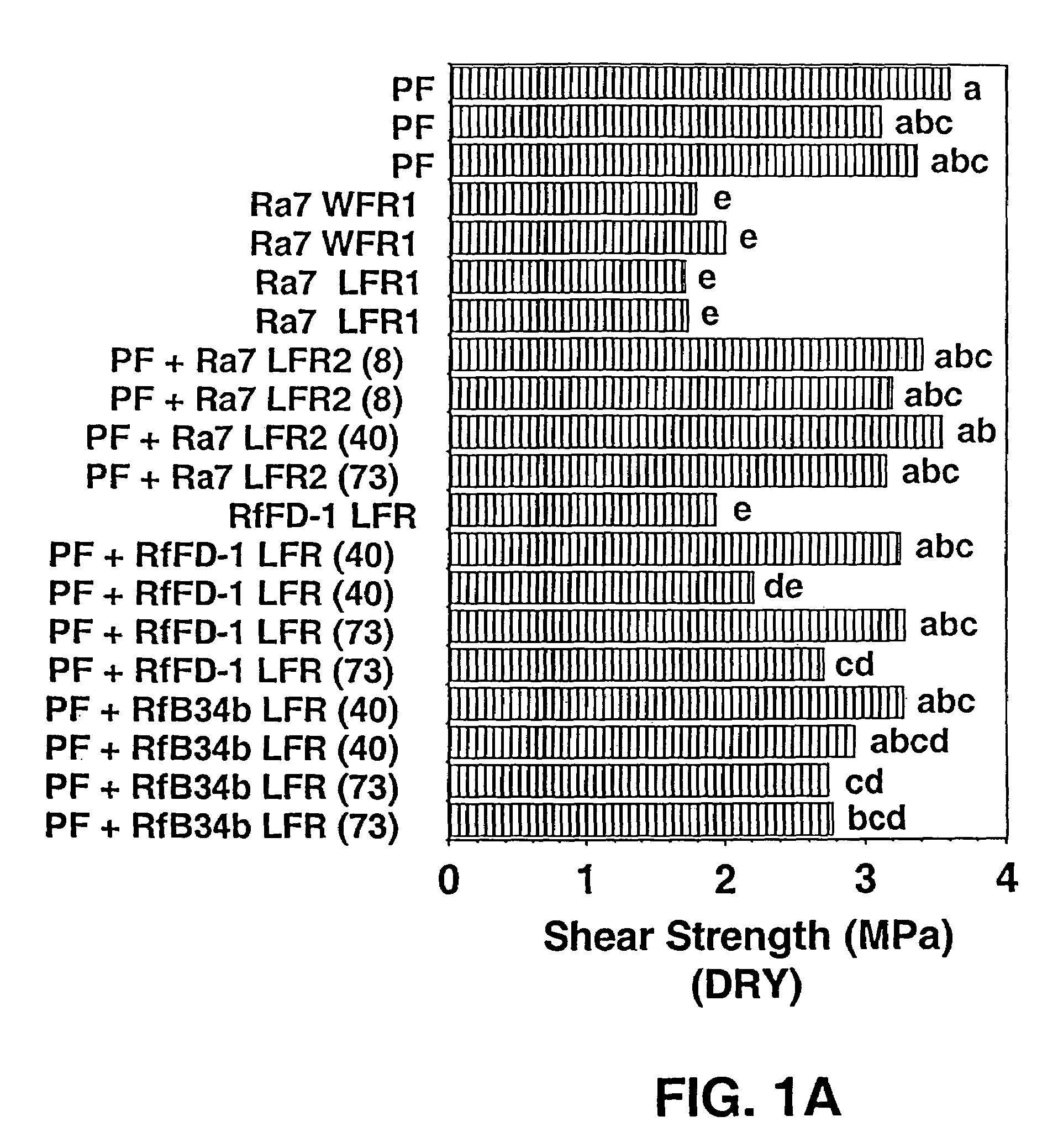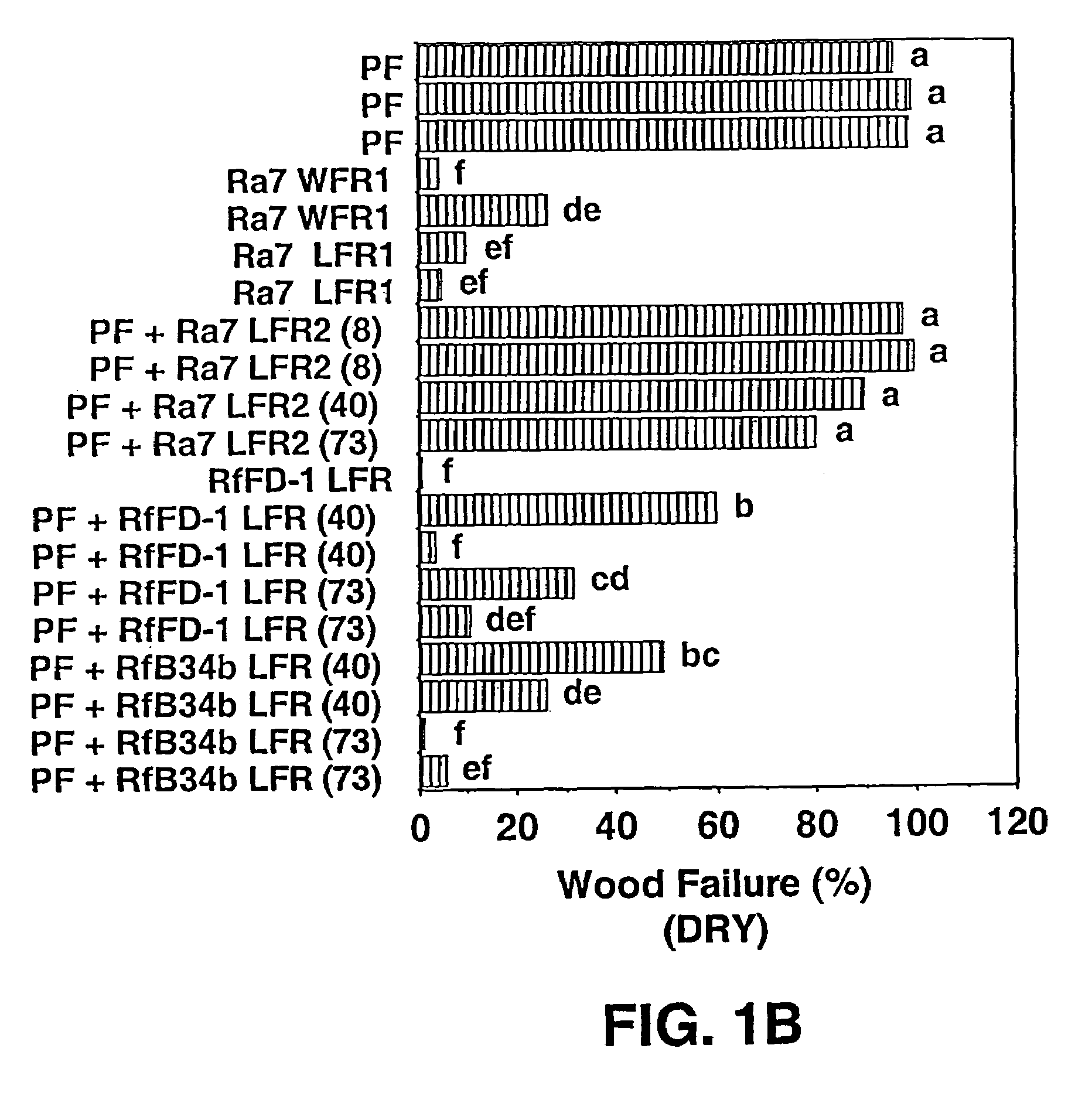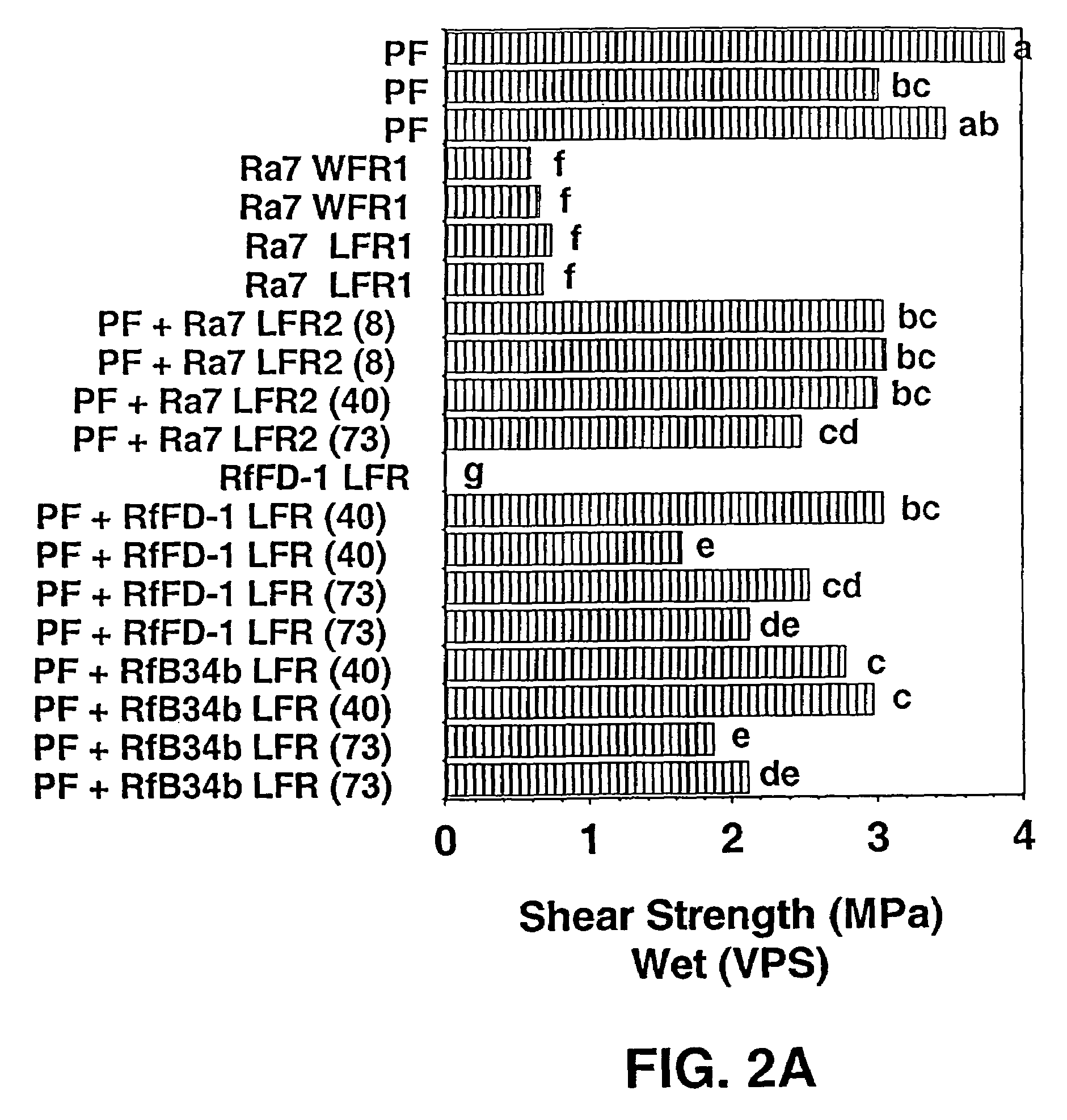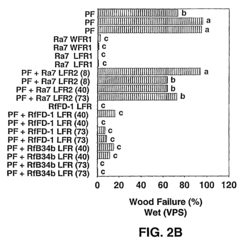Exploring Renewable Additives in Cellophane Manufacturing
JUL 9, 20259 MIN READ
Generate Your Research Report Instantly with AI Agent
Patsnap Eureka helps you evaluate technical feasibility & market potential.
Cellophane Evolution
Cellophane, a transparent film made from regenerated cellulose, has undergone significant evolution since its invention in the early 20th century. The journey of cellophane began in 1900 when Swiss chemist Jacques E. Brandenberger conceived the idea of creating a clear, protective coating for tablecloths. His initial attempts resulted in a thin, flexible sheet that peeled off easily – the precursor to modern cellophane.
The first commercial production of cellophane started in 1912 in France. However, it wasn't until the 1920s that cellophane gained widespread popularity, particularly in the United States. During this period, improvements in manufacturing processes and the development of moisture-proof coatings significantly enhanced cellophane's utility and market appeal.
The 1930s and 1940s saw cellophane become a ubiquitous packaging material, used for everything from food products to cigarettes. Its transparency, flexibility, and barrier properties made it an ideal choice for preserving freshness and showcasing products. This era also witnessed advancements in cellophane coloring and printing techniques, further expanding its applications.
In the post-World War II period, cellophane faced increasing competition from newly developed synthetic plastics. However, it maintained its relevance through continuous improvements in production efficiency and quality. The 1960s and 1970s brought about enhanced focus on cellophane's environmental impact, leading to research into more sustainable production methods.
The late 20th and early 21st centuries marked a renewed interest in cellophane due to growing environmental concerns. As a biodegradable material derived from renewable resources, cellophane aligned well with the emerging sustainability trends. This period saw efforts to develop cellophane variants with improved barrier properties and reduced environmental footprint.
Recent years have witnessed a surge in research aimed at incorporating renewable additives into cellophane manufacturing. This trend is driven by the need to enhance cellophane's properties while maintaining its eco-friendly nature. Innovations include the exploration of plant-based plasticizers, natural antimicrobial agents, and bio-derived strengthening compounds.
The evolution of cellophane continues to this day, with ongoing efforts to improve its performance, reduce production costs, and minimize environmental impact. Current research focuses on nanotechnology applications, bio-based additives, and advanced surface treatments to expand cellophane's functionality and market potential in an increasingly sustainability-conscious world.
The first commercial production of cellophane started in 1912 in France. However, it wasn't until the 1920s that cellophane gained widespread popularity, particularly in the United States. During this period, improvements in manufacturing processes and the development of moisture-proof coatings significantly enhanced cellophane's utility and market appeal.
The 1930s and 1940s saw cellophane become a ubiquitous packaging material, used for everything from food products to cigarettes. Its transparency, flexibility, and barrier properties made it an ideal choice for preserving freshness and showcasing products. This era also witnessed advancements in cellophane coloring and printing techniques, further expanding its applications.
In the post-World War II period, cellophane faced increasing competition from newly developed synthetic plastics. However, it maintained its relevance through continuous improvements in production efficiency and quality. The 1960s and 1970s brought about enhanced focus on cellophane's environmental impact, leading to research into more sustainable production methods.
The late 20th and early 21st centuries marked a renewed interest in cellophane due to growing environmental concerns. As a biodegradable material derived from renewable resources, cellophane aligned well with the emerging sustainability trends. This period saw efforts to develop cellophane variants with improved barrier properties and reduced environmental footprint.
Recent years have witnessed a surge in research aimed at incorporating renewable additives into cellophane manufacturing. This trend is driven by the need to enhance cellophane's properties while maintaining its eco-friendly nature. Innovations include the exploration of plant-based plasticizers, natural antimicrobial agents, and bio-derived strengthening compounds.
The evolution of cellophane continues to this day, with ongoing efforts to improve its performance, reduce production costs, and minimize environmental impact. Current research focuses on nanotechnology applications, bio-based additives, and advanced surface treatments to expand cellophane's functionality and market potential in an increasingly sustainability-conscious world.
Eco-Friendly Packaging
The packaging industry has witnessed a significant shift towards eco-friendly solutions in recent years, driven by increasing environmental concerns and consumer demand for sustainable products. Cellophane, a biodegradable and compostable material derived from cellulose, has emerged as a promising alternative to traditional plastic packaging. However, the manufacturing process of cellophane still relies on certain additives that may not be entirely renewable or environmentally friendly.
Exploring renewable additives in cellophane manufacturing represents a crucial step towards enhancing the overall sustainability of this packaging material. Traditional additives used in cellophane production often include plasticizers, stabilizers, and other chemicals that may have environmental implications. By focusing on renewable alternatives, the industry aims to reduce its carbon footprint and minimize the use of non-renewable resources.
One of the primary areas of research in this field involves the development of bio-based plasticizers. These additives are essential for improving the flexibility and durability of cellophane films. Researchers are investigating various plant-based oils and their derivatives as potential replacements for conventional petroleum-based plasticizers. For instance, epoxidized soybean oil and citrate esters derived from citrus fruits have shown promising results in initial studies.
Another important aspect of eco-friendly cellophane packaging is the exploration of natural stabilizers and antioxidants. These additives help maintain the integrity and shelf life of the packaging material. Plant extracts rich in polyphenols, such as green tea extract and rosemary extract, are being evaluated for their potential to replace synthetic antioxidants. These natural alternatives not only offer comparable performance but also contribute to the overall biodegradability of the packaging.
The incorporation of renewable fillers and reinforcing agents is also gaining attention in the cellophane industry. Nanocellulose, derived from plant sources, has emerged as a promising additive that can enhance the mechanical properties and barrier characteristics of cellophane films. This renewable nanomaterial can potentially reduce the need for synthetic reinforcing agents while improving the overall performance of the packaging.
Furthermore, the development of bio-based coatings and adhesives for cellophane packaging is an area of active research. These coatings play a crucial role in enhancing the moisture resistance and sealability of cellophane films. Researchers are exploring various plant-based polymers, such as starch derivatives and cellulose esters, as potential alternatives to conventional petroleum-based coatings.
The integration of these renewable additives into cellophane manufacturing processes presents both opportunities and challenges. While these eco-friendly alternatives offer significant environmental benefits, ensuring their compatibility with existing production methods and maintaining the desired performance characteristics of the final product remain key considerations. Ongoing research and development efforts are focused on optimizing formulations and scaling up production to make renewable additive-based cellophane commercially viable.
Exploring renewable additives in cellophane manufacturing represents a crucial step towards enhancing the overall sustainability of this packaging material. Traditional additives used in cellophane production often include plasticizers, stabilizers, and other chemicals that may have environmental implications. By focusing on renewable alternatives, the industry aims to reduce its carbon footprint and minimize the use of non-renewable resources.
One of the primary areas of research in this field involves the development of bio-based plasticizers. These additives are essential for improving the flexibility and durability of cellophane films. Researchers are investigating various plant-based oils and their derivatives as potential replacements for conventional petroleum-based plasticizers. For instance, epoxidized soybean oil and citrate esters derived from citrus fruits have shown promising results in initial studies.
Another important aspect of eco-friendly cellophane packaging is the exploration of natural stabilizers and antioxidants. These additives help maintain the integrity and shelf life of the packaging material. Plant extracts rich in polyphenols, such as green tea extract and rosemary extract, are being evaluated for their potential to replace synthetic antioxidants. These natural alternatives not only offer comparable performance but also contribute to the overall biodegradability of the packaging.
The incorporation of renewable fillers and reinforcing agents is also gaining attention in the cellophane industry. Nanocellulose, derived from plant sources, has emerged as a promising additive that can enhance the mechanical properties and barrier characteristics of cellophane films. This renewable nanomaterial can potentially reduce the need for synthetic reinforcing agents while improving the overall performance of the packaging.
Furthermore, the development of bio-based coatings and adhesives for cellophane packaging is an area of active research. These coatings play a crucial role in enhancing the moisture resistance and sealability of cellophane films. Researchers are exploring various plant-based polymers, such as starch derivatives and cellulose esters, as potential alternatives to conventional petroleum-based coatings.
The integration of these renewable additives into cellophane manufacturing processes presents both opportunities and challenges. While these eco-friendly alternatives offer significant environmental benefits, ensuring their compatibility with existing production methods and maintaining the desired performance characteristics of the final product remain key considerations. Ongoing research and development efforts are focused on optimizing formulations and scaling up production to make renewable additive-based cellophane commercially viable.
Renewable Additive Tech
The exploration of renewable additives in cellophane manufacturing represents a significant shift towards sustainable practices in the packaging industry. This technological advancement aims to reduce the environmental impact of cellophane production while maintaining or enhancing its desirable properties. The evolution of this technology can be traced back to the early 2000s when concerns about plastic pollution and the depletion of fossil resources began to gain traction.
Initially, research focused on identifying potential renewable sources that could replace traditional petroleum-based additives. Plant-based materials, such as cellulose derivatives and starch, emerged as promising candidates due to their abundance and biodegradability. However, early attempts to incorporate these additives often resulted in compromised mechanical properties and reduced moisture resistance of the cellophane.
A breakthrough came in the mid-2010s with the development of nanocellulose-based additives. These materials, derived from wood pulp or agricultural residues, offered exceptional strength and barrier properties when incorporated into cellophane. This innovation marked a turning point in the industry, demonstrating that renewable additives could not only match but potentially surpass the performance of conventional petroleum-based counterparts.
Concurrent with material innovations, advances in processing technologies played a crucial role in enabling the effective integration of renewable additives. Modified extrusion techniques and novel surface treatment methods were developed to enhance the compatibility between cellulose and bio-based additives, resulting in more uniform and stable cellophane structures.
Recent years have seen a surge in research focused on lignin-based additives. Lignin, a byproduct of paper production and bioethanol manufacturing, has shown promise in improving the UV resistance and antioxidant properties of cellophane. This development not only addresses performance issues but also contributes to waste valorization, aligning with circular economy principles.
The current technological landscape is characterized by a multi-pronged approach, combining various renewable additives to achieve optimal performance. Hybrid systems, incorporating nanocellulose, modified starches, and lignin derivatives, are being explored to create cellophane with enhanced functionality, such as improved gas barrier properties and antimicrobial activity.
Looking ahead, the field is poised for further innovation. Emerging areas of research include the development of stimuli-responsive renewable additives that can impart smart packaging capabilities to cellophane. Additionally, efforts are underway to streamline the production processes, making the incorporation of renewable additives more cost-effective and scalable for industrial applications.
Initially, research focused on identifying potential renewable sources that could replace traditional petroleum-based additives. Plant-based materials, such as cellulose derivatives and starch, emerged as promising candidates due to their abundance and biodegradability. However, early attempts to incorporate these additives often resulted in compromised mechanical properties and reduced moisture resistance of the cellophane.
A breakthrough came in the mid-2010s with the development of nanocellulose-based additives. These materials, derived from wood pulp or agricultural residues, offered exceptional strength and barrier properties when incorporated into cellophane. This innovation marked a turning point in the industry, demonstrating that renewable additives could not only match but potentially surpass the performance of conventional petroleum-based counterparts.
Concurrent with material innovations, advances in processing technologies played a crucial role in enabling the effective integration of renewable additives. Modified extrusion techniques and novel surface treatment methods were developed to enhance the compatibility between cellulose and bio-based additives, resulting in more uniform and stable cellophane structures.
Recent years have seen a surge in research focused on lignin-based additives. Lignin, a byproduct of paper production and bioethanol manufacturing, has shown promise in improving the UV resistance and antioxidant properties of cellophane. This development not only addresses performance issues but also contributes to waste valorization, aligning with circular economy principles.
The current technological landscape is characterized by a multi-pronged approach, combining various renewable additives to achieve optimal performance. Hybrid systems, incorporating nanocellulose, modified starches, and lignin derivatives, are being explored to create cellophane with enhanced functionality, such as improved gas barrier properties and antimicrobial activity.
Looking ahead, the field is poised for further innovation. Emerging areas of research include the development of stimuli-responsive renewable additives that can impart smart packaging capabilities to cellophane. Additionally, efforts are underway to streamline the production processes, making the incorporation of renewable additives more cost-effective and scalable for industrial applications.
Current Green Solutions
01 Biodegradable cellophane compositions
Development of biodegradable cellophane compositions incorporating renewable additives to enhance environmental sustainability. These compositions may include plant-based materials or other eco-friendly substances to improve the biodegradability of cellophane while maintaining its desirable properties.- Biodegradable cellophane compositions: Development of biodegradable cellophane compositions incorporating renewable additives to enhance environmental sustainability. These compositions may include plant-based materials or other eco-friendly substances to improve the biodegradability of cellophane while maintaining its functional properties.
- Cellulose-based renewable additives for cellophane: Utilization of cellulose-derived additives from renewable sources to modify cellophane properties. These additives can enhance the strength, flexibility, or barrier properties of cellophane while maintaining its biodegradability and reducing reliance on petroleum-based materials.
- Nanocellulose as a renewable additive for cellophane: Incorporation of nanocellulose, derived from renewable sources, into cellophane formulations. Nanocellulose can significantly improve the mechanical and barrier properties of cellophane, making it more suitable for packaging applications while maintaining its renewable nature.
- Bio-based plasticizers for cellophane: Development of renewable, bio-based plasticizers to replace traditional petroleum-derived plasticizers in cellophane production. These eco-friendly additives can improve the flexibility and processability of cellophane while reducing its environmental impact.
- Renewable coating additives for cellophane: Creation of renewable coating additives to enhance cellophane's barrier properties and functionality. These coatings, derived from natural sources, can improve moisture resistance, gas barrier properties, or add antimicrobial characteristics to cellophane while maintaining its biodegradability.
02 Cellulose-based renewable additives for cellophane
Utilization of cellulose-derived materials as renewable additives in cellophane production. These additives can improve the mechanical properties, barrier characteristics, or biodegradability of cellophane films while maintaining their transparency and flexibility.Expand Specific Solutions03 Bioplastic blends with cellophane
Incorporation of bioplastics or other renewable polymers into cellophane formulations to create hybrid materials with enhanced properties. These blends can combine the benefits of cellophane with the sustainability of bioplastics, potentially improving overall performance and environmental impact.Expand Specific Solutions04 Natural plasticizers for cellophane
Development of natural, renewable plasticizers derived from plant-based sources to replace traditional petroleum-based additives in cellophane production. These eco-friendly plasticizers can improve the flexibility and processability of cellophane while reducing its environmental footprint.Expand Specific Solutions05 Nanocellulose additives for cellophane enhancement
Integration of nanocellulose materials as renewable additives in cellophane production to improve its mechanical strength, barrier properties, and overall performance. These nano-scale cellulose particles can enhance the functionality of cellophane while maintaining its renewable and biodegradable nature.Expand Specific Solutions
Industry Leaders
The renewable additives market in cellophane manufacturing is in its early growth stage, characterized by increasing demand for sustainable packaging solutions. The market size is expanding, driven by consumer preferences for eco-friendly products and stringent environmental regulations. Technologically, the field is rapidly evolving, with companies like BP Corporation North America, China Petroleum & Chemical Corp., and ExxonMobil Technology & Engineering Co. investing in research and development. Universities such as Donghua University and Oregon State University are contributing to advancements in cellulose-based materials. Emerging players like Spinnova Oyj and Renmatix, Inc. are introducing innovative processes for cellulose fiber production, indicating a growing competitive landscape and accelerating technological maturity in this sector.
China Petroleum & Chemical Corp.
Technical Solution: China Petroleum & Chemical Corp. (Sinopec) has been exploring renewable additives in cellophane manufacturing through its green chemistry initiatives. The company has developed a bio-based plasticizer derived from soybean oil, which can partially replace traditional petroleum-based plasticizers in cellophane production[1]. This renewable additive improves the flexibility and biodegradability of cellophane while reducing its carbon footprint. Sinopec has also invested in research on cellulose-based materials, including nanocellulose, which can be incorporated into cellophane to enhance its strength and barrier properties[2]. The company's approach involves optimizing the extraction and modification processes of cellulose from agricultural waste, ensuring a sustainable source of raw materials for cellophane production[3].
Strengths: Access to vast resources for R&D, established production infrastructure, and a strong market presence. Weaknesses: Potential resistance to fully transitioning from petroleum-based products, and the need for significant investment in new technologies.
ExxonMobil Technology & Engineering Co.
Technical Solution: ExxonMobil Technology & Engineering Co. has been investigating the use of bio-based feedstocks in polymer production, which can be applied to cellophane manufacturing. The company has developed a process to convert cellulosic biomass into high-value chemical products, including those suitable for cellophane production[4]. This technology involves the use of a proprietary catalyst system that efficiently breaks down cellulose into smaller molecules, which can then be used as building blocks for cellophane and other bioplastics[5]. ExxonMobil has also been working on incorporating lignin, a byproduct of cellulose extraction, into polymer blends to improve the mechanical properties and reduce the environmental impact of cellophane[6]. The company's research focuses on optimizing the integration of these renewable additives while maintaining the performance characteristics required for commercial cellophane applications.
Strengths: Extensive experience in chemical engineering and polymer science, global research facilities. Weaknesses: Primary focus on petroleum-based products may slow the transition to fully renewable solutions.
Key Renewable Patents
A sequential fermentation of hydrolysate and solids from a dilute acid hydrolysis of biomass to produce fermentation products
PatentWO2014093797A1
Innovation
- A method involving sequential fermentation and saccharification of hemicellulose-derived materials and cellulose-lignin mixtures using specific microorganisms like Escherichia, Saccharomyces, and Candida, which reduces water usage, minimizes fermentation organism requirements, and optimizes reactor volume by converting maximum sugars into fuels like ethanol and butanol.
Wood adhesives containing solid residues of biomass fermentations
PatentInactiveUS7651582B2
Innovation
- A bioadhesive composition is developed using microbially-produced fermentation residue containing adherent microbial cells and glycocalyx, which can replace a significant portion of phenol-formaldehyde resin in wood products, leveraging the adhesive properties of Ruminococcus albus and other cellulolytic bacteria to create a sustainable and effective bonding agent.
Regulatory Framework
The regulatory framework surrounding the use of renewable additives in cellophane manufacturing is a complex and evolving landscape. As the global push for sustainability intensifies, governments and international bodies are increasingly focusing on the environmental impact of packaging materials. This has led to a surge in regulations aimed at promoting the use of renewable and biodegradable materials in packaging production.
In the European Union, the Packaging and Packaging Waste Directive (PPWD) sets targets for the recycling and recovery of packaging waste, including cellophane. The directive encourages the use of renewable additives by offering incentives for manufacturers who incorporate eco-friendly materials into their production processes. Similarly, the EU's Circular Economy Action Plan emphasizes the importance of sustainable packaging solutions, potentially influencing future regulations on cellophane manufacturing.
In the United States, the Food and Drug Administration (FDA) plays a crucial role in regulating food contact materials, including cellophane. The FDA's regulations on food contact substances (FCS) require manufacturers to demonstrate the safety of any new additives used in cellophane production. This process involves rigorous testing and documentation, which can be both time-consuming and costly for manufacturers exploring renewable additives.
Many countries have implemented or are considering implementing extended producer responsibility (EPR) schemes, which hold manufacturers accountable for the entire lifecycle of their products, including disposal. These regulations incentivize the use of renewable additives in cellophane manufacturing by potentially reducing end-of-life costs for producers.
The United Nations Environment Programme (UNEP) has been instrumental in promoting global standards for sustainable packaging. Their guidelines, while not legally binding, influence national policies and corporate practices worldwide. The UNEP's emphasis on life cycle assessments encourages manufacturers to consider the environmental impact of their additives from sourcing to disposal.
Certification systems, such as the Forest Stewardship Council (FSC) and the Programme for the Endorsement of Forest Certification (PEFC), provide frameworks for ensuring the sustainability of cellulose-based materials used in cellophane production. These certifications are increasingly recognized by regulatory bodies as indicators of compliance with sustainability standards.
As the regulatory landscape continues to evolve, manufacturers must stay informed about emerging policies and standards. This includes monitoring developments in chemical regulations, such as the EU's Registration, Evaluation, Authorisation and Restriction of Chemicals (REACH) regulation, which may impact the use of certain additives in cellophane production.
In the European Union, the Packaging and Packaging Waste Directive (PPWD) sets targets for the recycling and recovery of packaging waste, including cellophane. The directive encourages the use of renewable additives by offering incentives for manufacturers who incorporate eco-friendly materials into their production processes. Similarly, the EU's Circular Economy Action Plan emphasizes the importance of sustainable packaging solutions, potentially influencing future regulations on cellophane manufacturing.
In the United States, the Food and Drug Administration (FDA) plays a crucial role in regulating food contact materials, including cellophane. The FDA's regulations on food contact substances (FCS) require manufacturers to demonstrate the safety of any new additives used in cellophane production. This process involves rigorous testing and documentation, which can be both time-consuming and costly for manufacturers exploring renewable additives.
Many countries have implemented or are considering implementing extended producer responsibility (EPR) schemes, which hold manufacturers accountable for the entire lifecycle of their products, including disposal. These regulations incentivize the use of renewable additives in cellophane manufacturing by potentially reducing end-of-life costs for producers.
The United Nations Environment Programme (UNEP) has been instrumental in promoting global standards for sustainable packaging. Their guidelines, while not legally binding, influence national policies and corporate practices worldwide. The UNEP's emphasis on life cycle assessments encourages manufacturers to consider the environmental impact of their additives from sourcing to disposal.
Certification systems, such as the Forest Stewardship Council (FSC) and the Programme for the Endorsement of Forest Certification (PEFC), provide frameworks for ensuring the sustainability of cellulose-based materials used in cellophane production. These certifications are increasingly recognized by regulatory bodies as indicators of compliance with sustainability standards.
As the regulatory landscape continues to evolve, manufacturers must stay informed about emerging policies and standards. This includes monitoring developments in chemical regulations, such as the EU's Registration, Evaluation, Authorisation and Restriction of Chemicals (REACH) regulation, which may impact the use of certain additives in cellophane production.
Life Cycle Assessment
Life Cycle Assessment (LCA) plays a crucial role in evaluating the environmental impact of renewable additives in cellophane manufacturing. This comprehensive approach examines the entire lifecycle of these additives, from raw material extraction to disposal, providing valuable insights into their sustainability and potential benefits.
The first stage of LCA focuses on the sourcing and production of renewable additives. This involves analyzing the environmental impacts associated with cultivating and harvesting the biomass used as feedstock. Factors such as land use, water consumption, and energy requirements are carefully assessed. Additionally, the processing and refining of these raw materials into usable additives are examined, considering energy efficiency and waste generation.
During the manufacturing phase, LCA evaluates the integration of renewable additives into cellophane production. This includes assessing changes in energy consumption, water usage, and emissions compared to traditional manufacturing processes. The analysis also considers the potential for reduced reliance on fossil-based materials and the associated environmental benefits.
The use phase of cellophane products incorporating renewable additives is another critical aspect of LCA. This stage examines the performance characteristics of the modified cellophane, including durability, degradability, and potential for reuse or recycling. Any differences in environmental impact during the product's useful life are carefully documented and compared to conventional cellophane.
End-of-life considerations form a significant part of the LCA for renewable additives in cellophane. This involves analyzing various disposal scenarios, such as composting, recycling, or incineration. The biodegradability of the modified cellophane and its potential to reduce landfill waste are key factors in this assessment. Additionally, the LCA examines the possibility of creating closed-loop systems where waste cellophane can be reprocessed into new products or additives.
Throughout the LCA process, various environmental impact categories are evaluated, including global warming potential, eutrophication, acidification, and resource depletion. These assessments provide a holistic view of the ecological footprint associated with renewable additives in cellophane manufacturing. By comparing these results with those of traditional cellophane production, researchers and manufacturers can make informed decisions about the overall sustainability of incorporating renewable additives.
The LCA also considers potential trade-offs between different environmental impacts. For instance, while renewable additives may reduce fossil fuel dependency, they might require more water or land resources. These trade-offs are carefully analyzed to ensure a balanced understanding of the overall environmental impact.
The first stage of LCA focuses on the sourcing and production of renewable additives. This involves analyzing the environmental impacts associated with cultivating and harvesting the biomass used as feedstock. Factors such as land use, water consumption, and energy requirements are carefully assessed. Additionally, the processing and refining of these raw materials into usable additives are examined, considering energy efficiency and waste generation.
During the manufacturing phase, LCA evaluates the integration of renewable additives into cellophane production. This includes assessing changes in energy consumption, water usage, and emissions compared to traditional manufacturing processes. The analysis also considers the potential for reduced reliance on fossil-based materials and the associated environmental benefits.
The use phase of cellophane products incorporating renewable additives is another critical aspect of LCA. This stage examines the performance characteristics of the modified cellophane, including durability, degradability, and potential for reuse or recycling. Any differences in environmental impact during the product's useful life are carefully documented and compared to conventional cellophane.
End-of-life considerations form a significant part of the LCA for renewable additives in cellophane. This involves analyzing various disposal scenarios, such as composting, recycling, or incineration. The biodegradability of the modified cellophane and its potential to reduce landfill waste are key factors in this assessment. Additionally, the LCA examines the possibility of creating closed-loop systems where waste cellophane can be reprocessed into new products or additives.
Throughout the LCA process, various environmental impact categories are evaluated, including global warming potential, eutrophication, acidification, and resource depletion. These assessments provide a holistic view of the ecological footprint associated with renewable additives in cellophane manufacturing. By comparing these results with those of traditional cellophane production, researchers and manufacturers can make informed decisions about the overall sustainability of incorporating renewable additives.
The LCA also considers potential trade-offs between different environmental impacts. For instance, while renewable additives may reduce fossil fuel dependency, they might require more water or land resources. These trade-offs are carefully analyzed to ensure a balanced understanding of the overall environmental impact.
Unlock deeper insights with Patsnap Eureka Quick Research — get a full tech report to explore trends and direct your research. Try now!
Generate Your Research Report Instantly with AI Agent
Supercharge your innovation with Patsnap Eureka AI Agent Platform!
